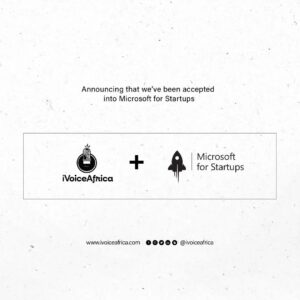We recently sat down with Eric Netsch of Authority Magazine to discuss the top 5 ways to market, promote and advertise an Ecommerce business today.
If you own an e-commerce store and are looking to increase conversion rates by 70% you should definitely check it out and reach out to us for help!
Here’s a little snippet of the interview!
———
Awesome, thanks so much for sharing that. I want to shift gears and talk about eCommerce. In my work, I focus on improving shopper engagement, so I’m very passionate about this topic. As you know, mobile has taken center stage in terms of how people are engaging and transacting with eCommerce stores—leading a lot of stores to lean into mobile-first shopping experiences like mobile apps. Can you help articulate a few reasons why an eCommerce business should consider creating its own mobile app?
You’re absolutely right. Mobile is taking center stage in terms of how people communicate and interact with E-commerce stores worldwide. But, I’d like to share some insight into African markets specifically because that’s where my expertise lies.
African tech has pushed beyond the boundaries of the developed world and is moving even more with innovation. If e-commerce businesses in Africa can get this topic right, they will most definitely make their mark.
Improving shopper engagement drives sales, but at the end of the day, shopper engagement can only be achieved when the user experience is at its greatest. User experience will always drive a business. So whatever you have to do to make things easier and smoother for your customers? Do it because that’s what will keep them. This reason alone is enough for eCommerce businesses to create mobile apps.
There are lots of surveys and even real-life examples that show users’ expectations for mobile apps.
Apps are generally more convenient, faster and easy to browse. In July 2021, 81.8% of Facebook’s mobile users accessed the platform via the app on Android devices and only 3.4% of Facebook’s mobile users accessed the platform via a web browser! And even in our day-to-day lives, I know that I’d access Facebook via the app, and the reason is simple! It’s convenient!
Apps work almost 2x faster than websites because data is saved locally on the device, unlike websites, so I can make an order with just a few clicks in a few seconds. Google even states that mobile websites’ bounce rate gets worse with every second it takes to load a page, which is no surprise. Not only is slow load time annoying to customers, but it’s also detrimental to eCommerce businesses.
According to the same survey, a mobile landing page must load entirely in at least 22 seconds, and if it takes more than 3 seconds to load, 53 percent of users leave and abandon their cart. Now that’s a serious issue because eCommerce businesses can lose so many of the customers they worked hard to get.
If a mobile app loads 1.5x faster than websites, then you know what your customers want. Go where your customers go if you still want to be in business.
The cost of paid ads is at an all-time high. What are some alternative strategies to reach your target consumers that don’t involve paying a third party like Facebook and Instagram?
Maximizing SEO, partner marketing, and even leveraging social media are all cost-effective and alternative strategies to consider. I’ll explain.
With search engine optimization you can drive organic traffic to websites using search intent. You can also leverage social media without paying for ads. To attract customers, demonstrate competence in your area with relevant content, give guidance for your goods or services, and use hashtags relating to your niche. Doing these with proper management will help reach your audience without running an ad.
For partner marketing, you can join a non-competing company with similar target audiences to advertise a product or service. The idea is that both brands benefit from each other’s existing customer base, and some crossover will occur. A vivid example of this is Apple and Mastercard. The companies do not sell the same product, but working together created a revolutionary way to shop.
Ok super. Here is the main question of our interview. Based on your experience and success, what are your “Top 5 Ways To Market, Advertise & Promote An Ecommerce Business Today?” Please share a story or an example for each.
Our Top 5 Ways to Market, Advertise & Promote an Ecommerce business today! Read the full interview!


